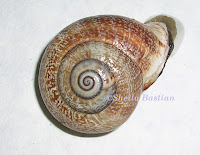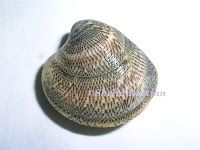IDENTIFYING MOLLUSCS
Molluscs are invertebrate animals. Most are aquatic e.g. mussels, clam, squid, cockles, cuttlefish, whelk etc. Others, like snails and slugs are terrestrial. Their main characteristic is that they have a soft body and a shell.The body has three parts: a head that contains sensorial organs, a main body part, that contains the main organs and a muscular foot, they use to move or to bury themselves in the sand. Shells can be made up of one or two parts called valves or can be internal. Some molluscs don't have a shell, e.g. slugs. Aquatic molluscs breathe through gills and terrestrial through lungs. Most molluscs are hermaphrodites.
 |
| Variety of molluscs |
Molluscs are divided into three groups:
Gastropods: They have a spiral shaped shell with only one valve.
Bivalve: They have a shell with two valves.
Cephalopods: They have an internal shell.
We have observed a variety of molluscs in the class, identified them and also identified the group they belong to.
Here are some of the molluscs we have seen.
 |
| Razor clam - Bivlave |
 |
| Snail - Gastropod |
 |
| Cockle - Bivalve |
 |
| Whelk - Gastropod |
 |
| Whelk - Gastropod |
 |
| Mussel - Bivlave |
 |
| Clam - Bivalve |
 |
| Scallop - Bivlave |
Did you enjoy the experiment?
2 comments:
Sheila, ¿why do we don´t see the scallop in class it is amazing. You can see very well the parts of a mollusc.
Miguel, this year I didn't find scallop at the fish shop. This is why I have published this photograph I took during this same experiment a few years back. You are right, it's a big mollusc so you can see the parts very well. I hope, at least, you like my photograph!
Post a Comment